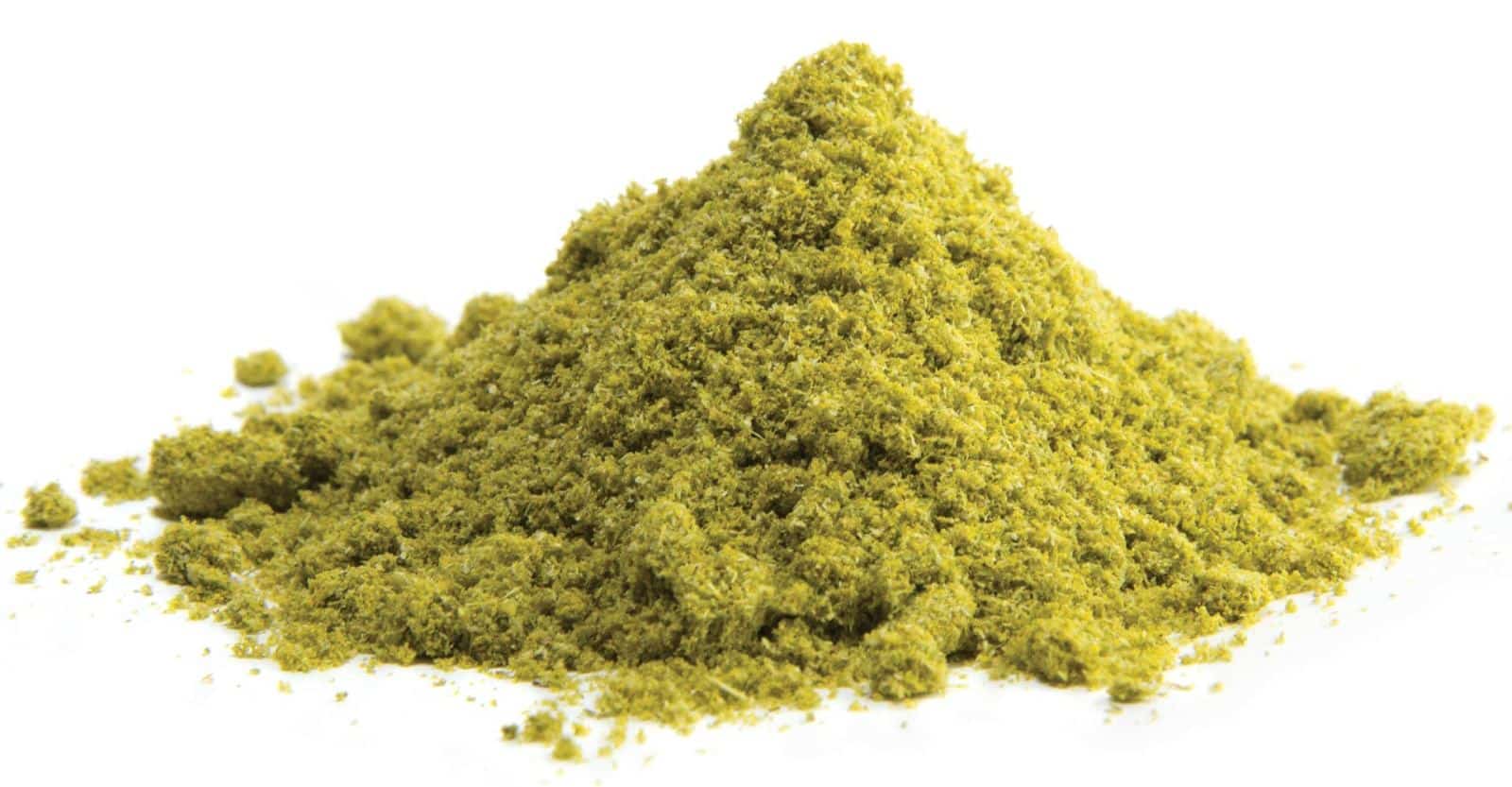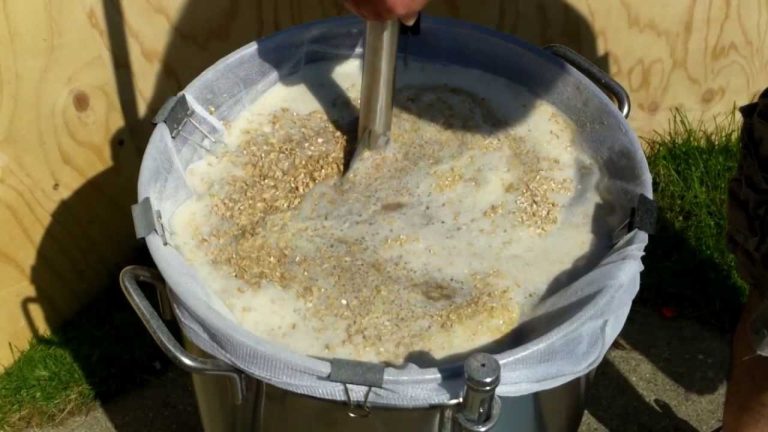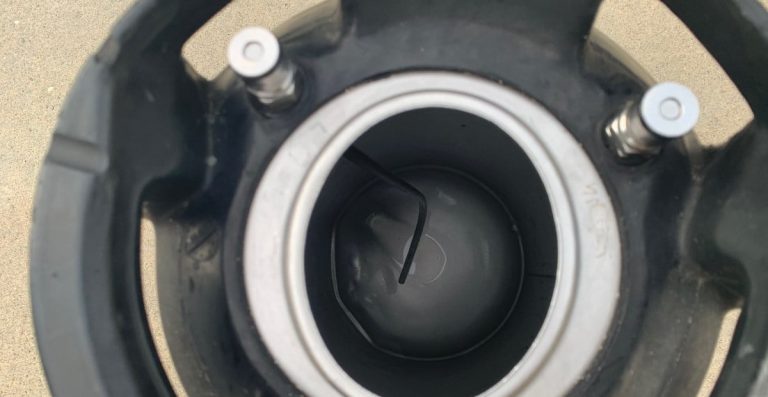The Case to use Lupulin Powder (Cryo Hops) in Every IPA
When I started brewing IPAs, I came across CRYO Hops on NorthernBrewer.com and thought to myself “Why would anyone pay double for these types of hops?”.
Well, after surrounding myself with everything craft beer over the last few years, I’ve changed my tune quite a bit.
This article was written to argue that any home brewer that is brewing IPAs – and more specifically, Hazy, New England-style IPAs – need to be using Lupulin powder in every batch they make. I dig into the science and economics of it all as well as what the titans in the brewing world say about this new(ish) style of hops.
What is Lupulin Powder?
Lupulin powder (pronounced loop-you-lin) is the yellow gland of a hop plant in which the hop acids and the essential oils can be found. Lupulin is a fine yellow powder that can be separated out from the green leaves of the hop itself, sort of like pollen from a flower.
Brands of Lupulin Hop Pellets
In 2017, Yakima Chief Hops (YCH) acquired patent pending status for the features of its proprietary CRYO Hops process technology that is used to produce the LupuLN2® Hop Pellets. Inside a nitrogen-rich atmosphere (to reduce oxidation) at extremely lower temperatures than normal, YCH separates the lupulin powder from whole hop cones. The temperature inside this extraction process is at a mean of 63 degrees Fahrenheit. This is approximately 30 degrees cooler than average T-90 hop pellet production temperatures.
The extracted lupulin powder – called LupuLN2 by YCH – is then sold as-is to larger breweries or pressed into pellets for easy use by homebrewers.
In July 2020, the John I. Haas company introduced a Cryo competitor called LUPOMAX. LUPOMAX is also a concentrated lupulin pellet that reliably delivers enormous hop flavors while reducing beer loss.
In 2021, Hopsteiner released their Lupulin Pellet line, for which they have over ten varieties available in.
The Economics of Using Lupulin Powder

On the surface, CRYO/Lupulin hops are approximately double the price of regular T90 pellets. While this may be an instant turnoff for certain homebrewers looking to pinch pennies with their brewing, it shouldn’t be. Let me explain further.
| Hop | T90 Price (1oz) | Cryo Price (1oz) | $/oz Difference |
|---|---|---|---|
| Mosaic | $3.49 | $5.99 | $2.50 |
| Citra | $3.69 | $5.99 | $2.30 |
| Simcoe | $2.99 | $4.99 | $2.00 |
| Ekuanot | $2.99 | $4.99 | $2.00 |
| Amarillo | $2.49 | $5.99 | $3.50 |
| Cascade | $1.79 | $4.99 | $3.20 |
That extra price difference gets even more drastic if you used to buy your pellet hops in bulk. For example, CRYO hops are $3.24 an ounce more than Citra T90 pellets bought in an 8oz bag. Based on prices today, CRYO hops are 38-55% more expensive than their regular T90 pellets comparables.
According to Yakima Chief Hops, the suggested dosing rate of CRYO hops is 40-50% of the typical hop pellets by weight. As you may have noticed, that almost exactly matches up with the added expense percentage.
However, let’s look at the math in a real-world example.
Let’s assume a recipe calls for 4 ounces of Citra to be added into the dry hop. Using YCH’s suggestions, that means we should instead use between 1.6-2 ounces of CRYO hops.
The math says that you’d be spending $11 on T90 pellets and $11.98 ($0.98 in added expense) on CRYO pellets using the 50% dosing method, and $9.59 ($1.41 savings) using the 40% dosing percentage.
The estimated dosing rate of CRYO hops is 40-50% of the typical hop pellets by weight.
Yakima Chief Hops
Using Both Pellets & Powder in Dry Hopping
Pinthouse Pizza talked to Scott Janish in 2017 and said that the sweet spot for them seemed to be dry hopping with 30-50% with powder and the rest in pellets. YCH actually mentions this as well in their sales-pitch PDF saying that they also recommend using a 1 (powder) : 0.625 (pellet) ratio in dry hopping.
Other Half also says that they prefer a mix of pellets and powder in their super hazy IPAs due to the different flavor profiles they each add and how differently they behave in suspension during fermentation.
Reduced Contact Time Needed
Less time is likely needed to get full flavor and aroma extraction with lupulin powder than with whole cones or pellets. Pinthouse Pizza also told Janish they found that after just 30 minutes of circulation, they seemed to have close to complete extraction. Another brewery also mentioned to him that when using lupulin powder, the contact time needed for extraction was much less.
For homebrewers this may not be a huge advantage, but it is something to consider when dry hopping. If you are able to successfully get the powder into suspension, it appears that the dry hop time in days could be cut in half or even more.
Reduce Trub Loss with Lupulin Powder
By far, the other largest advantage of using CRYO hops over the old-school T90 pellets is the reduction in trub loss. The lupulin powder imparts similar flavor easily into the beer, but because there is little to no vegetation with these types of hops, the trub loss is minimal. In fact, YCH estimates that by using CRYO hops you gain about 5% of your beer back. In a 5 gallon batch this is 1/4 a gallon, or 32 ounces (or 2 fantastic beers).
In fact, Greenpoint Beer in NYC mentions that the yields of their batches increased up to 20 percent after they started using lupulin powder. That’s an enormous amount of beer to save from the garbage pile, and a critical benefit when hopping with the massive amounts of hops that New England IPAs require.
Flavor Differences with Lupulin Powder
The first and most obvious difference between pure lupulin powder and regular T90 pellets is the difference in bitterness. Lupulin powder has fewer bittering iso-alpha-acids that come from the vegetation, which will result in less bitterness.
There is also some major proponents to using lupulin powder due to its propensity to impart huge juicy flavors into the final beer. In fact, Other Half and Alchemist are two of the largest breweries that openly flaunt using lupulin powder in their beers, albeit at different stages.
Other Half uses lupulin powder in most of their double dry hop (DDH) beers as the second dry hop. Says Sam Richardson, brewmaster and co-founder of Other Half: “Powder gives you a cleaner, smoother flavor and a real brightness. It takes beers that are already nice and hoppy and adds a really bright layer to it.”
John Kimmich, owner and brewmaster of The Alchemist in Vermont says that he prefers to use lupulin powder in the whirlpool “hot” side over the dry hop because it adds “more depth” to the flavor there instead.
Reasons NOT to use Lupulin Powder
There is a downside to everything, and the use of lupulin powder is no different. While we’ve extolled all the benefits of using lupulin powder throughout the first part of this article, we’d be remiss if we didn’t outline some real downsides to using it as well.
Less Stable… Maybe
“For me and everyone I talk to who’s used it, we think it’s a less stable product. A beer hopped with 100 percent powder, the aromas and flavors drop off quicker than with pellets.” says Richardson from Other Half.
The stability Richardson is speaking of is the ability of the aromas and flavors imparted by the lupulin powder to “stick” with the beer, and not when NEIPAs get cardboard-like off flavors after they’ve become stale. In fact, Janish hypothesizes that the same polyphenols that are added into beer in greater quantities by using pellets over powder are also the same compounds that cause the beer to oxidize quicker. What he is suggesting is that New England IPAs using powder to dry hop may oxidize slower than those using only pellets.
Suspension Problems
Another problem with using lupulin powder is that it usually sits on top the beer during fermentation if not forced into suspension by the brewer. This would require a homebrewer to get creative since the last thing anyone wants to do is stir their NEIPA at risk of oxidation. Even worse, once the hop powder is suspended, it appears to not drop out as easily as pellets. This may mean that cold crashing becomes even more important when using powder in the dry hop.
Limited Hop Selection
CRYO hops are patented by YCH, but it does appear that other manufacturers such as Haas and Hopstiener are getting into the game with their own products. However, at the time of this writing many Southern Hemisphere hop varieties such as Galaxy, Vic Secret, Motueka or Nelson Sauvin are not available in powder form. Luckily many others are, so there are still ample chances to use it in most of your IPA recipes.
All the hop varieties that are available in YCH CRYO form are:
- Mosaic
- Citra
- Centennial
- Columbus
- Loral
- Cascade
- Simcoe
- Amarillo
- Palisade
- Sabro
- Ekuanot
- Idaho 7 (hard to find, was released in late 2019)
- Ahtanum (hard to find, was released in late 2019)
- Azacca (hard to find, was released in late 2019)
- Cashmere (hard to find, was released in late 2019)
The hop varieties in Haas’s LUPOMAX form are:
- Mosaic
- Citra
- Sabro
- El Dorado
- Idaho 7
- Cashmere
- Amarillo
- Azacca
- BRU-1
- Columbus
- Ekuanot
The hop varieties available through Hopsteiner’s Lupulin Pellets are:
- Sultana
- Bravo
- Lotus
- Calypso
- Caltus
- Lemondrop
- Amarillo
- Cascade
- Centennial
- Comet
Conclusion
I think after all this research, I will begin replacing about 50% of my dry hopped pellets with LupuLN2 Cryo or Lupomax hops. The economics work out well and seeing as Other Half is one of the breweries I am chasing to emulate the flavors of it only makes sense. The downsides don’t appear to be enough to discourage me from trying it out.






